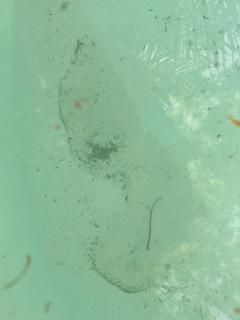High pH coupled with high CH can quickly scale up the cell. Keep the pH lower and the problem should reduce.
Thanks I'll do that... will try keeping it in the lower 7's - do you / anyone ever/often use a pH buffer? I noticed no mention of it in the Recommended Pool Chemicals listing on the Pool School pages.
If you are able to scrape off some of the black spot and then smear it on a white piece of paper, if it's green (or dark green), then that is black algae. If not, then it may be something else such as an organic stain. If it doesn't scrape off, it may be a metal stain.
I tried doing that this afternoon - the problem is the only spots I can try this are the shallow and deep end steps. When I try to lift some of it, it just blows away like powder (literally that consistency). The actual algae (if its that!) in the middle of the pool, theres no way even getting into the pool I can easily take a sample of it (tried using the pool net but again it just gets pushed away/falls through it, though its definitely a tighter consistency). The other wider patches are again quite a powder like consistency but keep coming back in the same spots.
One thing I've noticed - the two actual black spot algae patches (where they don't brush away at all and even have a bit of a membrane around them) attract this same black stuff around them. Thats what makes me think somehow it has spread from those two spots and started forming in other areas... even though the other stuff just brushes away. See the pic below (pool is blue, iPhone has got the colours wrong - its not green!)



